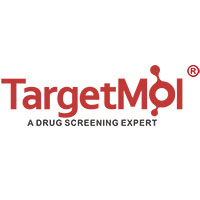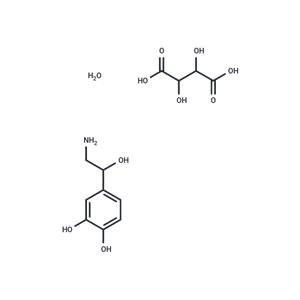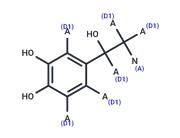| Name | Norepinephrine bitartrate monohydrate |
| Description | Norepinephrine bitartrate monohydrate is an effective adrenergic receptor (AR) agonist that directly activates α1, α2, and β1 receptors, and is commonly used to induce cardiomyopathy models. |
| Cell Research | Norepinephrine (NE)is dissolved in DMSO and stored, and then diluted with appropriate media before use[2]. Subcutaneous preadipocytes derived from a 38-year old non-diabetic female donor are immortalized with TERT and HPV E6/E7. For the current studies, a stable diploid clone (referred to as clone B) with consistent differentiation capacity is isolated by ring cloning. Cells are grown in preadipocyte PGM2 media. Once cells are confluent, differentiation is induced by incubation in differentiation media consisting of dexamethasone, IBMX, indomethacin, and additional insulin. Cells are differentiated for 10 days. Prior to treatment, media is replaced with PGM2 media for one day and then switched to serum-free media overnight for treatments. Adipocytes are treated for 6 hours with vehicle, Norepinephrine (NE, 10 μM), CGP (10 nM), or Norepinephrine (NE) and CGP[2]. |
| In vitro | Noradrenaline modulates the gain of evoked activity, especially in sensory areas. Noradrenaline promotes long-term synaptic plasticity, in addition to these data emphasizing its short-term influence. Noradrenaline would signal ‘gross changes in the environment that produce sensory information strongly violating top-down expectations' and would, through an enhancement of ‘bottom-up' information processing at the expense of irrelevant ‘top-down' expectations, favor behavioral adjustment. [1] Noradrenaline modulates drive and energy and exerts a fine regulation of specific processes including learning, memory, sleep, arousal and adaptation. Noradrenaline system is intimately involved in a range of psychological processes which, when disrupted, lead to the expression of classifiable psychiatric disorders. Noradrenaline appears to be involved in a range of psychological processes, including arousal (vigilance), cognition, learning and sleep regulation, and also in regulating response to stressors which might initiate or exacerbate depressive symptomatology. Noradrenaline deficiency in this pathway may reduce concentration, affect working memory and cause psychomotor retardation, resulting in apathy and depression,while an increase in noradrenaline in this pathway is predicted to alleviate poor concentration, apathy and depression. [2] Noradrenaline effects are complex and depending on experimental conditions (ponto-medullary and medullary preparations) and species (rats or mice), exogenous Noradrenaline mainly facilitates or mainly inhibits the neonatal RRG, with a mixture of α1 facilitatory and α2 inhibitory effects. [3] |
| Storage | Powder: -20°C for 3 years | In solvent: -80°C for 1 year | Shipping with blue ice/Shipping at ambient temperature. |
| Solubility Information | H2O : 31.9 mg/mL (94.58 mM), Sonication is recommended.
DMSO : 50 mg/mL (148.24 mM), Sonication is recommended.
10% DMSO+40% PEG300+5% Tween 80+45% Saline : 2 mg/mL (5.93 mM), Sonication is recommended.
|
| Keywords | β1-adrenergic receptor | Norepinephrine bitartrate Monohydrate | Norepinephrine bitartrate monohydrate | Norepinephrine bitartrate | Noradrenaline bitartrate Monohydrate | Noradrenaline bitartrate | L-Noradrenaline bitartrate | Levarterenol bitartrate | Inhibitor | inhibit | EndogenousMetabolite | Endogenous Metabolite | Beta Receptor | Autophagy | AdrenergicReceptor | Adrenergic Receptor |
| Inhibitors Related | Sucrose | Cysteamine hydrochloride | Hydroxychloroquine | Daidzein | Fumaric acid | Ferulic Acid | Paeonol | Glycerol | Thymidine | Naringin | Alginic acid | 3-Indoleacetic acid |
| Related Compound Libraries | Bioactive Compound Library | Anti-Neurodegenerative Disease Compound Library | Membrane Protein-targeted Compound Library | Anti-Cancer Clinical Compound Library | Drug Repurposing Compound Library | Natural Product Library | FDA-Approved Drug Library | Anti-Cancer Approved Drug Library | Immunology/Inflammation Compound Library | Bioactive Compounds Library Max | GPCR Compound Library | Anti-Cancer Drug Library |

 United States
United States






